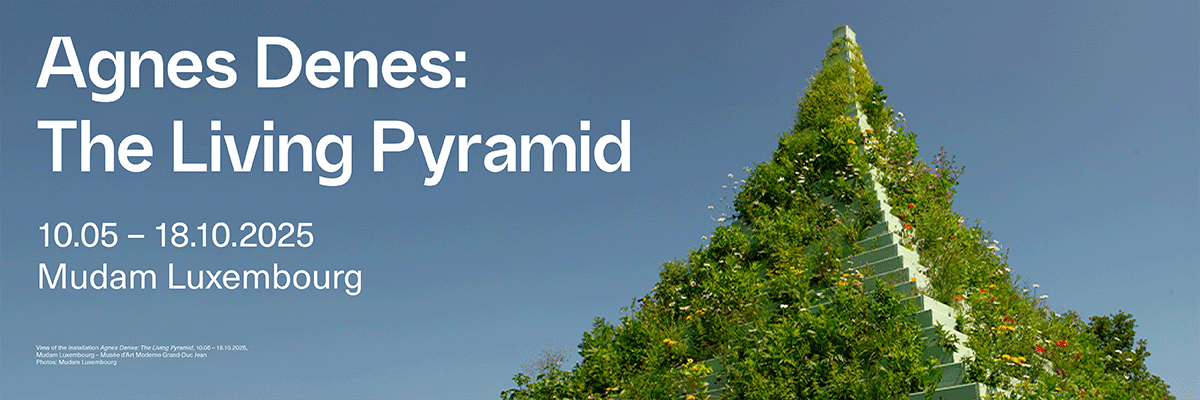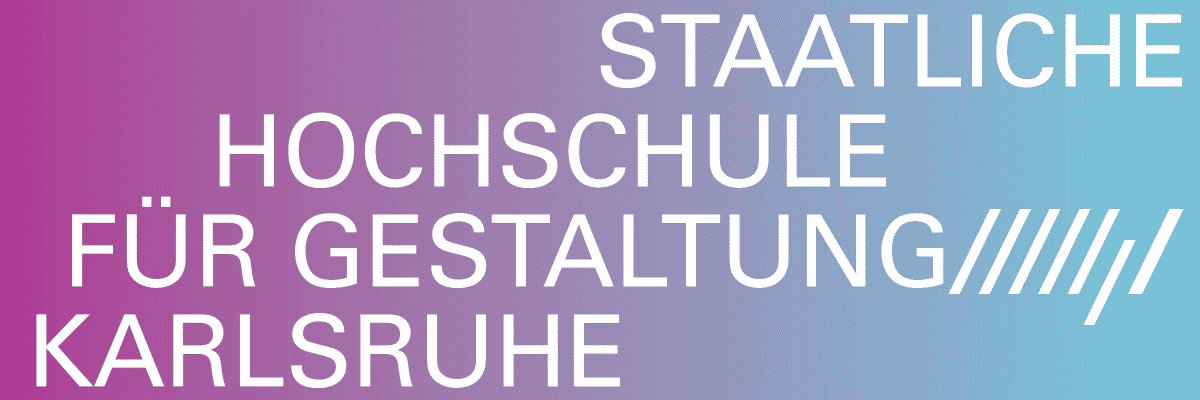
Groupshow
Pride and Prejudice
Project Info
- 💙 Universitätsgalerie der Angewandten
- 💚 Ulrike Johannsen, Sascha Zaitseva
- 🖤 Groupshow
- 💜 Ulrike Johannsen
- 💛 Unless not other mentioned: Stefan Lux
Share on

Monica Bonvicini Fleurs du Mal (big bubble). Bronze, hand blown glass, 53 x 46 x 46 cm, 2022 Paweł Althamer Self-Portrait. Painted wood, 62 x 10 x 10 cm, 1991 Terese Kasalicky Curtain #1 (Ropes). Polyamide and acid paint, 1300 cm x 240/200 cm, 2023
Advertisement

Monica Bonvicini Fleurs du Mal (big bubble). Bronze, hand blown glass, 53 x 46 x 46 cm (20 7⁄8 x 18 1⁄8 x 18 1⁄8 in.), total, 2022 Terese Kasalicky Curtain #1 (Ropes). Polyamide and acid paint, 1300 cm x 240/200 cm, 2023

Installation View Workshop Carl Auböck, Lucie McKenzie, Isolde Maria Joham, Nairy Bahgramian, Petra Zimmermann, Maria Biljan-Bilger, Rosemarie Trockel, Lucie Rie, Theater Gates

Workshop Carl Auböck Foot, XL. Brass cast, polished, 23 x 36 cm, 2020 Lucie McKenzie Untitled. Mixed media, three painted objects, 2016 Courtesy: evn collection, Maria Enzersdorf

Rosemarie Trockel Pot #4. Ceramic, glazed with platinum, h 26.7 cm, ø 27.9 cm, 2006 Photo: Lisa Rastl Courtesy evn collection, Maria Enzersdorf
![Ring „The Jeweler‘s Archive Model 1 (LAPIS BALL, SIDE PARTS LAPIS-ROS. [sig.?] 30./X.28, 103660)/Variant 3“, 2022, silver gold plated](https://backend.kubaparis.com/submissions/2023/06/11/Pride-and-Prejudice/08_Zimmermann.jpg?v=1686492631)
Ring „The Jeweler‘s Archive Model 1 (LAPIS BALL, SIDE PARTS LAPIS-ROS. [sig.?] 30./X.28, 103660)/Variant 3“, 2022, silver gold plated

Ingeborg Strobl Allgemeine Physik. Ceramic, glazed, with burned in letters (Heisenberg‘s formula), base and display case, 140 x 41 x 41 mm, 1978 Courtesy evn collection, Maria Enzersdorf

Natascha Borowsky Khadi. 10, 12,13, 2015, Khadi. 01, 02, 04, 06, 10, 11, 15, 18, 19, 2016, 40 x 30 cm 60 x 50 cm Analogue C-print, framed with anti-reflective glass and white wooden border

Installation view Ernst Gamperl, Maja Behrmann, Gerold Tusch

Ernst Gamperl 68/2022//200. 70/2022//200. 84/2022//200. Ash limed and treated with beeswax 39 x 27 cm, 28 x 80 cm, 41 x 36 cm

Gerold Tusch Miss Bubbleton. ceramic, built, glazed. 2-part glued and screwed (with 3 additional parts) Height 97 cm, diameter 55 cm 2023

Installation View Doris Theres Hofer, Maja Behrmann, Nicoleta Auersperg

Nicoleta Auersperg Geometrische Körper. Cherry wood, mouth blown glass, stainless steel, 2013 15 x 55 x 15 cm, 22 x 66 x 24 cm, 25 x 50 x 30 cm, 20 x 45 x 20 cm, 20 x 65 x 25 cm

Isa Melsheimer Loos, das Gesetz der Bekleidung, gegen die Surrogaten. 2010 Men suit fabric, perls, embroidery thread, 410 x 336 cm Max Taut, 2015 Glass, silicone, polycarbonate, H 63 cm, DM 33 cm Courtesy: Galerie Nächst St. Stephan Vienna

Maja Behrmann Untitled (BigButti). Wood, lacquer, metal, 131.5 x 87.8 x 80.3 cm, 2022 Untitled (EyEy). Wood, lacquer, metal, 169 x 132 x 115 cm, 2022

Birke Gorm Detail: IOU. Wood, dimensions variable, 2017—ongoing Courtesy: Galerie Croy Nielsen, Vienna

Installation View Heti Prack, Birke Gorm

Heti Prack Utopian Exercises. A) don’t reproduce - dip, B) degrowth - lift, C) stop unnecessary production - dip. 218 cm x 119 cm x 105 cm, mixed media, 2023

Peter Sandbichler DIE ZEIT, POLITIK, 26. JULI 2017. Newspaper, iron, museum glass, 52 x 52 x 5.5 cm, 2018 Erwin Hauer Design #1. Composite, 61 x 40 x 16 cm, 1952

Hans Christian Andersen Silhouettes. Postcards, 7 different Motifs, 14.8 x 10.5 cm
Artists:
Hildegard Absalon, Paweł Althamer, Hans Christian Andersen, Carl Auböck, Nicoleta Auersperg, Nairy Baghramian, Maja Behrmann, David Bielander, Maria Biljan-Bilger, Monica Bonvicini, Natascha Borowsky, Ernst Gamperl, Theaster Gates, Birke Gorm, Erwin Hauer, Doris Theres Hofer, Isolde Maria Joham, Terese Kasalicky, Elisabeth Khilström, Stefan Lux, Lucy McKenzie, Isa Melsheimer, Barbara Michl-Karácsonyi, Shinji Nakaba, Heti Prack, Lucie Rie, Gerd Rothmann, Peter Sandbichler, Ingeborg Strobl, Rosemarie Trockel, Gerold Tusch, Petra Zimmermann
Prejudice, misunderstanding, class relations and arrogance, and last but not least all-conquering love – these are the threads from which Jane Austen‘s probably most famous novel Pride and Prejudice is woven. The so-called “novel of manners” describes the social conventions of a hierarchically ordered society in detailed observation. The trials and tribulations of Austen‘s novels take their starting point in the conditions of the economic and gender-specific social order of the 18th century and develop their narrative plot lines from there.
There are numerous analogies between Austen‘s novels and the often unspoken
conventions and judgments implied in the self-definition and interplay of the fine and the applied arts. Developed in the Renaissance, the notion, that fine art lays claim to a higher status than craft because of its anchorage in the intellectual space of the idea, the ‘disegno’, continues to impact our thinking today. However, transgressing these divisions handed down over centuries – the cross-genre – produces highly inspiring and advanced works in the field of art. The rediscovery of fiber art in recent years and the conspicuous presence of ceramics in the visual arts currently are symptomatic of the newly awakened interest in the relationship between fine arts and applied arts. What is striking in this context, however, is that applied artists who distinguish themselves with cross-genre works receive little attention outside their sphere.
The boundaries between the genres are fluid. For a long time, craft genres used to be
stigmatised and devalued, solely because of their body-relatedness or because of a
certain materiality: if someone worked with ceramics or textiles, the judgment was
already made. This kind of classification is obsolete today. But which terms are suitable to define the fields in more detail? The term „aboutness“ coined by the American philosopher Arthur C. Danto could be useful, even if insufficient. In his aesthetics, Danto was concerned with, among other things, what makes an object a work of art. He used Andy Warhol‘s Brillo Boxes as an example to illustrate why the boxes in the supermarket are not art, but Warhol‘s boxes are indeed art, because they are „about something“.¹
On closer examination, the hierarchies between fine arts and applied arts depend in turn on other hierarchies. Here, too, it is a matter of division of intellectual and manual work. In many areas, manual labour is still denied intellectuality and thus considered less valuable, a notion that is strongly tied to gender and social norms. The hierarchy between feminine- and masculine-connoted work has not been abolished to this day, and crafts of the feminine sphere, such as knitting or embroidery, are still held in lower esteem than those of the masculine sphere. This devaluation is ultimately also based on a primary gender-specific hierarchy, seeing that women were long considered to be insufficiently thinking, purely reproducing beings. Hierarchies of the senses may also have contributed somewhat to this division of high and low art. During the 18th century, the sense of sight was upgraded and the sense of touch degraded; for example, works of art that could still be experienced by touch in early museums could now only be „grasped“ visually.²
The exhibition Pride and Prejudice at Heiligenkreuzerhof is conceived as a poetic narrative that places works of fine art on equal footing with those of the applied arts in order to explore the interstices of the disciplines. Emphasis is placed on techniques of the applied arts: goldsmithing, belting, ceramics, glassblowing, weaving, tapestry, embroidery, woodturning, silhouette cutting, stucco art, and decorative painting.
The exhibition brings together numerous border crossers who work at the intersection of the disciplines by unreservedly exploring materialities, exhausting the limits of techniques, reflecting on their attributions, or thinking about ornament and decoration.
The underlying questions are manifold: What role does the thinking hand play in a largely disembodied, digitised world? Which innovative power and knowledge gain lie in craftsmanship today? What potential do artists find in old craft techniques that have
been overtaken by industry, such as stucco art, embroidery, or hair braiding?
Currently, there is a new urgency at universities to study craft techniques. Students want to take advantage of the workshop facilities to an extent that often exceeds the resources available. One can only speculate about the reasons for this development: Gender boundaries in the process of dissolving and associated debates have helped making feminine-connoted crafts attractive again. Enthusiasm for the digital world has waned and the associated „loss of body“ lets us to recall „the intelligence of the hand“³ . The ecological crisis is also challenging the production-focused art world, and sustainability is becomes a concern there as well. The irretrievable loss of many craft techniques and professions is slowly entering our consciousness and perceived as painful, culturally and collectively.
Consequently, the exhibition also considers itself a plea for the expansion of workshops at art universities and a reunification of design and execution. At the University of Applied Arts in Vienna, for example, the retirement of Carl Auböck (metal) and Isolde Maria Joham (glass art) in the 1990s lead to a complete closure of the arts and crafts classes, and the ceramics department was reduced to a workshop without professorship following the departure of Maria Biljan-Bilger and Otto Lorenz. With dwindling educational offers, the discourse about these crafts and their specifics has also suffered in terms of knowledge and quality in Austria; the active centres for ceramics today can be found in Japan, Scandinavia, or England, to name a few. The fact that the workshop of Viennese ceramist Lucie Rie is now on permanent display at the Victoria and Albert Museum in London and that her last exhibition in Vienna was in 1999 can be considered symptomatic.
The exhibition aims not only to showcase the conceptually and technically extraordinary, but also to deliberately create confusion in order to examine and sharpen our current concepts. Thus, works of so-called applied art can be read as works of so-called fine art and vice versa: corrugated cardboard turns out to be precious metal, candy boxes a conceptual work, supposed knickknacks high art, abstract patterns a photo-realistic representation, and painting a work of cross-stitch art. Art and craft, fine and applied art – this century-old love story can now revel in all its beauty in the remarkable baroque setting of the refectory of Heiligenkreuzerhof, unfold before our sharpened gaze – without pride or prejudice – and arouse curiosity as to how things will continue with the protagonists of this love story.
1 Arthur C. Danto, Die Verklärung des Gewöhnlichen, Eine Philosophie der Kunst, Suhrkamp Verlag,
Frankfurt am Main, 1991
2 Phillip Zitzelsperger, Das Design-Dilemma zwischen Kunst und Problemlösung, Hatje Cantz, Berlin, 2021
3 Quote Carl Auböck III., as well title of an exhibition of the metal design class in the 1980s
Translation: Marlene Lahmer
Ulrike Johannsen




